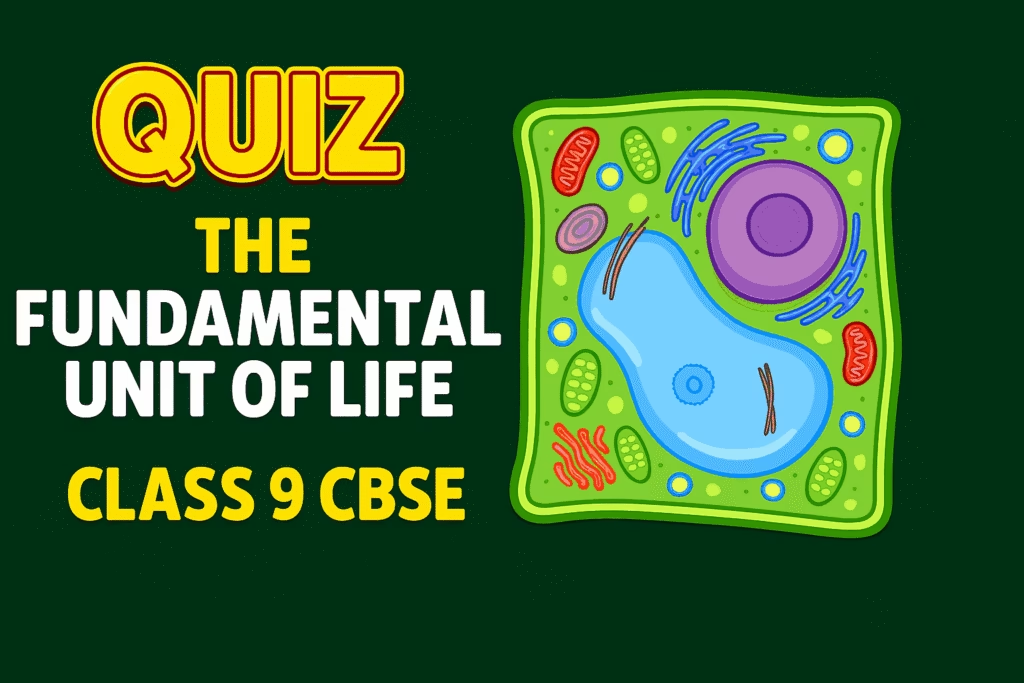We have meticulously designed the explanation to Motion f NCERT class 9 chapter 7, using our long teaching experiences and working with varied types of learners with different styles.
Read with deep concentration “Motion Class 9 Explanation” and you will never have any issue understanding the concepts of the chapter.
You only have to revise to remember the concepts and definitions for your exam. You can keep reading The Short Notes On Motion for the same
Table of Contents
What is Motion?
🌳 Motion and Rest: Let’s Begin with a Story
Imagine you’re sitting under a tree. The tree is still.
A bird flaps its wings and flies past you. The bird is moving.
- The tree is at rest.
- The bird is in motion.
- Motion and Rest: In our everyday life, we see things that are still, which we call at rest, and things that are moving, which we call in motion. Think about a tree standing still (at rest) and a bird flying (in motion).

- Perceiving Motion:
- We usually see something in motion when its position changes with time. For example, when a car moves down the street, its position changes.
- Sometimes, we can’t directly see the motion, but we can infer it through indirect evidence. Imagine you can’t see the wind, but you see leaves and dust moving – that tells you the air is in motion.
- Example: The Earth’s Motion: Have you ever wondered why the sun rises and sets, or why seasons change? This is due to the Earth’s motion, but we don’t feel the Earth moving directly. It’s a type of motion we infer!
- Motion is Relative: What looks like motion to one person might look like rest to another.
- Imagine you are in a moving bus. The trees outside seem to be moving backward. But a person standing on the road sees the bus and everyone inside it moving forward.
- However, you, sitting inside the bus, see your friends next to you as being at rest. This shows that motion depends on who is observing it.
- Types of Motion: Motion can be simple or very complex.
- Some things move in a straight line.
- Others might move in a circle.
- Some objects rotate (like a spinning top).
- And a few might vibrate (like a guitar string).
- Sometimes, motion can even be a mix of these!
- Why Study Motion? Motion is super important! Sometimes, uncontrolled motion can be dangerous, like a big flood or a hurricane. But controlled motion can be very helpful, like making electricity from moving water (hydro-electric power). Studying motion helps us understand and even control these things.
Describing Motion
- Reference Point (Origin): To describe where an object is, we need a reference point. Think of it like giving directions. If someone asks where your school is, you might say, “It’s 2 km north of the railway station”. In this example, the railway station is your reference point. This special reference point is also called the origin.
- Motion Along a Straight Line: This is the easiest type of motion to understand. Imagine a car driving straight down a road. We can mark different points on the road (like O, A, B, C) to show where the car is at different times.
Distance and Displacement
These are two important ways to talk about how much an object has moved.
Distance & Displacement
Interactive Visualization
Key Examples
- From O to A (60 km), then to C (35 km from O): distance is 60 + 25 = 85 km; displacement is 35 km.
- From O to A: distance and displacement are both 60 km.
- From O to A (60 km) and back to O: distance is 60 + 60 = 120 km; displacement is 0 km.
- Large distance but zero displacement if the object returns to its starting point.
- Distance: This is the total path length covered by an object.
- It only tells you “how much” an object has moved, not “in which direction”. For example, if you walk 60 km, that’s your distance.
- The “how much” part is called the numerical value or magnitude.
- Example: If an object starts at point O, goes to A (60 km), then comes back to C (which is 35 km from O), the total path it covered (distance) is 60 km + 35 km = 95 km.
- Displacement: This is the shortest distance measured from where an object started (initial position) to where it ended up (final position).
- Unlike distance, displacement cares about direction.
- Example: Using the same example:
- If the object moves from O to A, its distance is 60 km, and its displacement is also 60 km (because it’s the shortest path from start to end).
- If it goes from O to A (60 km) and then back to B (25 km back from A, so B is 35 km from O), the total distance is 60 km + 25 km = 85 km. But the displacement is only 35 km, because that’s the shortest straight line from O to B.
- If the object goes from O to A (60 km) and then comes all the way back to O, the total distance covered is 60 km + 60 km = 120 km. But its displacement is zero because it ended up right where it started!
- Key Idea: An object can have moved a lot (a large distance) but have zero displacement if it returns to its starting point.
Uniform Motion and Non-Uniform Motion
- Uniform Motion: Imagine you are walking and cover exactly 5 meters every single second. If an object covers equal distances in equal amounts of time, it is in uniform motion. It’s like moving at a steady pace.
- Non-Uniform Motion: Now, imagine you’re walking on a crowded street, sometimes fast, sometimes slow. If an object covers unequal distances in equal amounts of time, it is in non-uniform motion. This is more common in our daily lives.
Uniform Motion
Constant Velocity
Characteristics
- Constant speed and direction
- No acceleration
- Straight-line path
- Equal displacements in equal time intervals
Non-Uniform Motion
Changing Velocity
Characteristics
- Changing speed and/or direction
- Acceleration present
- Curved path
- Unequal displacements in equal time intervals
Key Differences
Uniform Motion: Constant velocity (speed and direction) with no acceleration. The object covers equal distances in equal time intervals.
Non-Uniform Motion: Changing velocity (speed and/or direction) with acceleration present. The object covers unequal distances in equal time intervals.
Measuring the Rate of Motion: Speed and Velocity
- Speed: This tells us how fast an object is moving. It’s found by figuring out the distance travelled by the object in a unit of time (like one second or one hour).
- Units of Speed: The main unit for speed in science is meters per second (m s⁻¹ or m/s). Other common units are centimeters per second (cm s⁻¹) or kilometers per hour (km h⁻¹).
- Magnitude Only: When we talk about speed, we only need to say its number value (like 50 km h⁻¹), not its direction.
- Average Speed: Because objects often don’t move at a constant speed (they’re in non-uniform motion), we often talk about average speed.
- Formula: Average speed is found by dividing the total distance travelled by the total time taken.
- Example: If a car travels 100 km in 2 hours, its average speed is 50 km h⁻¹. It might have gone faster or slower at different times, but on average, it was 50 km h⁻¹.
- Velocity: Velocity is like speed, but it’s more complete! It tells us how fast an object is moving AND in what definite direction.
- So, if a car is moving at 60 km h⁻¹ (speed), its velocity could be 60 km h⁻¹ to the east (speed + direction).
- Changing Velocity: An object’s velocity can change if:
- Its speed changes (e.g., speeding up or slowing down).
- Its direction changes (e.g., turning a corner).
- Both its speed and direction change.
- Average Velocity:
- Similar to average speed, if an object’s velocity is changing, we can find its average velocity.
- If the velocity changes at a steady rate, we can find the average velocity by adding the starting velocity (initial velocity) and the ending velocity (final velocity) and then dividing by 2.
- Units: Velocity uses the same units as speed, like meters per second (m s⁻¹ or m/s).
- Example: Usha Swimming: Usha swims in a 90m long pool. She swims from one end to the other and back again along the same path, covering 180m in one minute.
- Her average speed is 3 m s⁻¹ (because she covered 180m in 60 seconds).
- But her average velocity is 0 m s⁻¹! Why? Because she started and ended at the same point (one end of the pool), so her displacement (shortest distance from start to end) is zero.
Rate of Change of Velocity: Acceleration
Acceleration Visualization Animation
Understanding how velocity changes over time and the concept of acceleration
Zero Acceleration
Uniform Motion (Constant Velocity)
Characteristics
- Velocity remains constant
- No change in speed or direction
- Acceleration = 0
- Object moves in a straight line
Positive Acceleration
Speeding Up
Characteristics
- Velocity increases with time
- Acceleration in direction of motion
- Object speeds up
- Velocity-time graph has positive slope
Negative Acceleration
Slowing Down (Deceleration)
Characteristics
- Velocity decreases with time
- Acceleration opposite to motion
- Object slows down
- Velocity-time graph has negative slope
Uniform Acceleration
Constant Rate of Change
Characteristics
- Velocity changes by equal amounts in equal time intervals
- Constant acceleration
- Example: Free fall under gravity
- Velocity-time graph is a straight line
Non-Uniform Acceleration
Changing Rate of Change
Characteristics
- Velocity changes by unequal amounts in equal time intervals
- Acceleration changes with time
- Example: Car in city traffic
- Velocity-time graph is curved
Understanding Acceleration
Key Formula
Where:
- a = acceleration (m/s²)
- Δv = change in velocity (v – u)
- v = final velocity (m/s)
- u = initial velocity (m/s)
- t = time taken for change (s)
Units of Acceleration
The standard unit of acceleration in the SI system is meters per second squared (m/s²).
Other units include:
- cm/s² (centimeters per second squared)
- km/h² (kilometers per hour squared)
- ft/s² (feet per second squared)
Acceleration due to gravity on Earth is approximately 9.8 m/s².
Real-World Examples
- Positive Acceleration: Car speeding up from a stoplight
- Negative Acceleration: Bicycle coming to a stop at a red light
- Uniform Acceleration: Skydiver in free fall
- Non-Uniform Acceleration: Roller coaster moving along its track
- Zero Acceleration: Cruise ship sailing at constant speed
- Acceleration: This is a measure of how much an object's velocity changes per unit of time.
- If an object is moving at a steady velocity (uniform motion), its velocity isn't changing, so its acceleration is zero.
- But if its velocity is changing (non-uniform motion), then it has acceleration.
- Formula: We calculate acceleration (a) by taking the change in velocity (final velocity minus initial velocity) and dividing it by the time taken for that change. So,
a = (v - u) / t. - Units of Acceleration: The main unit for acceleration is meters per second squared (m s⁻²).
- Positive and Negative Acceleration:
- If an object is speeding up in the direction it's moving, its acceleration is usually positive.
- If an object is slowing down (like when you hit the brakes), its acceleration is in the opposite direction to its motion, so we call it negative acceleration. This is also sometimes called deceleration.
- Uniform Acceleration: If an object's velocity changes by equal amounts in equal intervals of time, we say it has uniform acceleration. A good example is a ball falling freely from a height – it speeds up at a steady rate due to gravity.
- Non-Uniform Acceleration: If an object's velocity changes by unequal amounts in equal intervals of time, it has non-uniform acceleration. Think about a car in city traffic, constantly speeding up and slowing down in unpredictable ways.
Graphical Representation of Motion
Graphs are like pictures that show us information quickly and easily.
- Distance-Time Graphs: These graphs show how an object's position changes over time.
- How it's made: Time is always drawn along the horizontal line (x-axis), and distance is drawn along the vertical line (y-axis).
- Uniform Speed: If an object moves at a uniform speed, the graph will be a straight line that goes upwards . This straight line shows that the distance covered is directly proportional to the time taken.
- Finding Speed from the Graph: The steepness (or slope) of this straight line tells you the object's speed. A steeper line means faster speed.
- Non-Uniform Speed (Accelerated Motion): If an object has non-uniform speed, the distance-time graph will be a curved line, not a straight one.
- Object at Rest: If an object is not moving (at rest), its distance-time graph will be a flat, straight line parallel to the time axis. This means its distance from the starting point isn't changing over time.
- Velocity-Time Graphs: These graphs show how an object's velocity changes over time.
- How it's made: Time is on the x-axis, and velocity is on the y-axis.
- Uniform Velocity: If an object moves at a uniform velocity (meaning its speed and direction don't change), the graph will be a straight, flat line parallel to the x-axis. This shows that the velocity stays the same over time.
- Finding Displacement from the Graph: The area under a velocity-time graph (the space between the line and the time axis) tells you the displacement of the object.
- Uniformly Accelerated Motion: If an object has uniform acceleration, its velocity-time graph will be a straight line that slopes upwards or downwards. An upward slope means speeding up, and a downward slope means slowing down.
- Finding Distance/Displacement: Again, the area under this straight line also gives you the distance (magnitude of displacement). You might have to calculate the area of a shape like a rectangle plus a triangle.
- Non-Uniformly Accelerated Motion: If an object has non-uniform acceleration, its velocity-time graph will be a curved or wavy line. This means its velocity is changing in an unpredictable way.
1. What is a Distance-Time Graph?
This graph shows how far an object moves as time passes. It helps us understand motion.
2. How is it Drawn?
Time is on the horizontal line (x-axis), and distance is on the vertical line (y-axis).
3. Uniform Speed
If the graph is a straight line going up, it means the object is moving at a uniform speed.
4. Finding Speed from the Graph
The steeper the line, the faster the object moves. Slope = Distance ÷ Time.
5. Non-Uniform Speed
A curved line in the graph means the object is speeding up or slowing down.
6. Object at Rest
If the graph is flat, it means the object is not moving.
7. Quick Quiz
What does a flat line in a distance-time graph mean?
Equations of Motion
When an object moves in a straight line with uniform acceleration, we can use special math formulas called equations of motion to figure out its velocity, acceleration, distance, and time.
There are three main equations:
v = u + at: This equation helps us find the final velocity (v) if we know the starting velocity (u), how much it's accelerating (a), and for how long (t).s = ut + ½ at²: This equation helps us find the distance (s) an object travels if we know its starting velocity (u), acceleration (a), and the time it travels (t).2as = v² - u²: This equation helps us find the distance (s) if we know the starting velocity (u), final velocity (v), and acceleration (a), without needing to know the time directly.
- In these equations:
uis the initial velocity (what the speed and direction were at the beginning).vis the final velocity (what the speed and direction are at the end).ais the uniform acceleration.tis the time.sis the distance travelled.
These equations are like powerful tools that help scientists and engineers calculate motion in many situations!
Uniform Circular Motion
8. Uniform Circular Motion
Acceleration by Direction Change: Acceleration means velocity is changing. Velocity changes if speed changes, direction changes, or both.
Imagine an athlete running around a rectangular track. They change direction at each corner. If the shape has more sides (like a hexagon or octagon), they change direction more often. If the shape has infinite sides, it becomes a circle!
Definition: When an object moves around a circular path at a constant speed, its motion is called uniform circular motion.
Why is it Accelerated? Even if speed stays the same, the direction changes constantly, which means velocity is changing → hence the motion is accelerated.
गति में परिवर्तन = त्वरण: जब वेग में परिवर्तन होता है, तब वस्तु त्वरित होती है। वेग तब बदलता है जब गति, दिशा या दोनों बदलें।
कल्पना कीजिए कि एक एथलीट एक चौकोर ट्रैक पर दौड़ रहा है – हर कोने पर दिशा बदलनी पड़ती है। अगर कोने अधिक हों, तो दिशा ज़्यादा बार बदलती है। अगर कोने अनगिनत हों, तो ट्रैक एक वृत्त बन जाता है।
परिभाषा: जब कोई वस्तु किसी वृत्ताकार पथ पर समान गति से चलती है, तो उसे समान वृत्तीय गति कहते हैं।
त्वरण क्यों होता है? गति समान रहते हुए भी दिशा लगातार बदलती रहती है, इसलिए वेग बदलता है और इसका मतलब होता है त्वरण।
9. Examples of Uniform Circular Motion
- Spinning a stone on a string in a circle
- The Moon orbiting the Earth
- A satellite moving around the Earth
- A cyclist on a circular track
- पत्थर को धागे से घुमाना
- चंद्रमा का पृथ्वी की परिक्रमा करना
- उपग्रह का पृथ्वी के चारों ओर घूमना
- साइकिल चालक का गोल ट्रैक पर समान गति से चलना
10. Speed in Circular Motion
If an object moves in a circle of radius r and takes time t to complete one full round, then:
Speed (v) = 2πr / t
Here, 2πr is the distance around the circle (circumference).
यदि कोई वस्तु r त्रिज्या वाले वृत्त में t समय में एक चक्कर पूरा करती है, तो उसकी गति:
गति (v) = 2πr / t
यहाँ, 2πr वृत्त की परिधि (circumference) है।
11. Quick Quiz
Which of the following is an example of uniform circular motion?
- Acceleration by Direction Change: We learned that acceleration means velocity is changing. Velocity changes if speed changes, direction changes, or both.
- Imagine an athlete running around a rectangular track. They have to change direction at each of the four corners. If the track has more sides (like a hexagon with 6 sides or an octagon with 8 sides), the athlete has to change direction more often.
- Now, imagine if the track had an infinite number of sides – it would become a perfect circle!.
- Definition: When an object moves around a circular path at a constant speed, its motion is called uniform circular motion.
- Why is it Accelerated? Even if the object's speed stays the same in a circular path, its direction is constantly changing at every single point as it goes around the circle. Because its direction is changing, its velocity is changing, which means it is accelerating.
- Examples:
- Spinning a stone on a string in a circle. If you let go, the stone flies off in a straight line, which shows that its direction was changing all the time while it was spinning.
- The Moon moving around the Earth.
- A satellite orbiting the Earth.
- A cyclist riding on a circular track at a constant speed.
- Speed in Circular Motion: If an object moves in a circle with a radius
r(the distance from the center to the edge) and takestseconds to complete one full round, its speedvcan be found using the formula:v = 2πr / t. (The2πrpart is the distance around the circle).
Conclusion: Motion Class 9 Explanation
Well you are here it means you have read the explanantion. Very nice of you. Keep reading and practicisng questions to fetch good marks.
Constant revision after the first understanding of concepts will make you confident and will equip you to facea any tests and exam.
Best of luck!





Leave a Comment